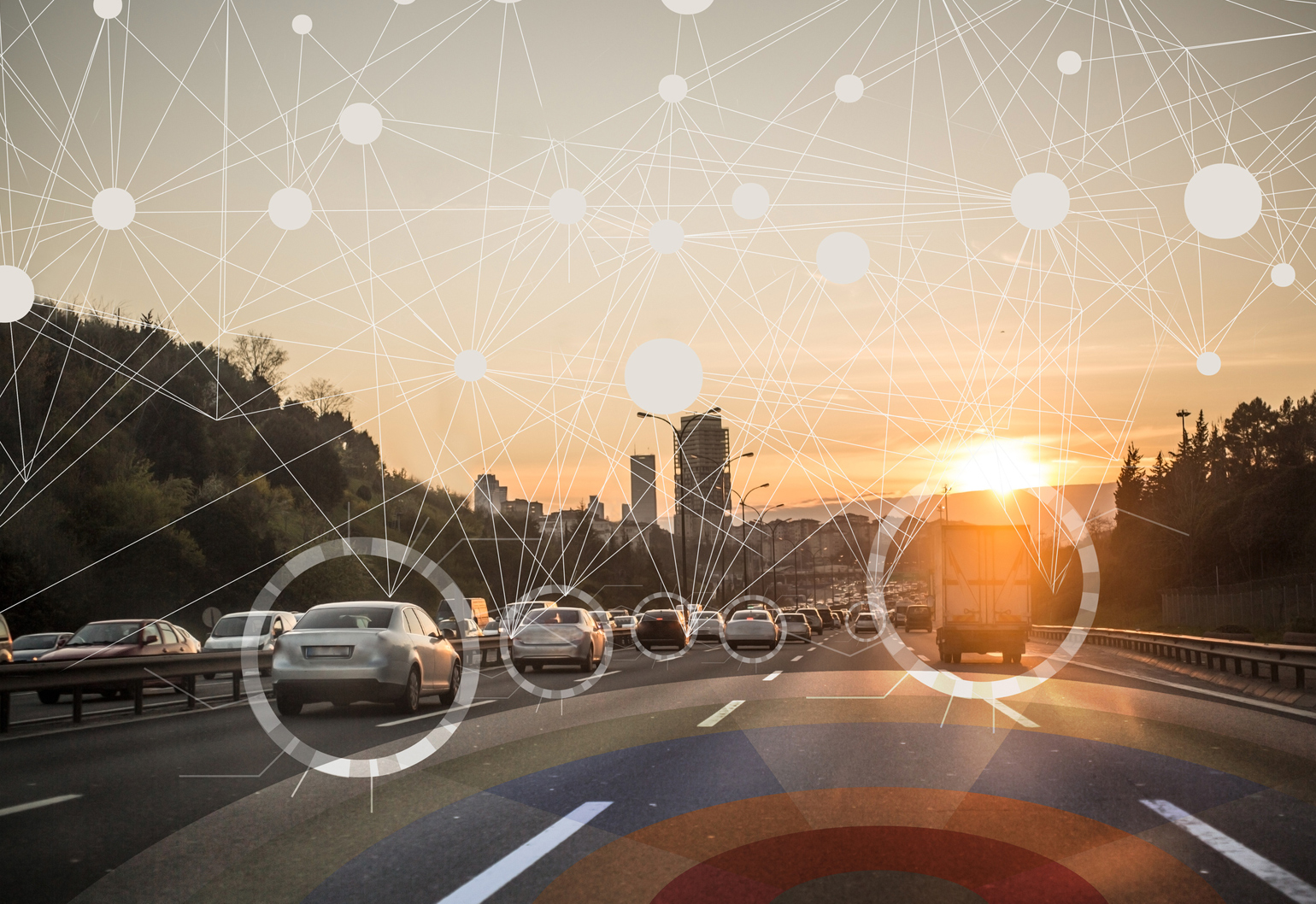The end goal of mobility-as-a-service (MaaS) thinking is to reduce the number of people driving cars or taking other forms of private transport and to get more people using public transport.
When it comes to the future of transport, especially urban transport, there’s a push and pull relationship between technology and demand.
On the tech side, there’s an emergence of intermediate transportation modes like ride-sharing. Another big topic is the interest in autonomous cars and connected vehicle technology.
These bring new challenges: How do intermediate transport modes compete with traditional public transport? How will autonomous cars change cities?
On the demand side, we see things like a growing demand for sustainability, changing demographics and a shift towards a collaborative economy, which ties back into technology trends, what they enable and how they influence people’s expectations.
The sustainability agenda demands we reduce our dependence on petrol-guzzling automobiles. The shift to collaborative economies demands a rethink of ‘ownership’ and new definitions of good service.
Future transport is trending towards more autonomous and electric vehicles, greater sharing and less private ownership.
Transitioning to smart mobility and MaaS would potentially address a host of these concerns. MaaS can be defined as a combination of public and private transport that provides holistic, optimal and people-centred travel options. It brings all modes of travel into a single mobility package, usually bought as a bundle or subscription.
Time and space
If you think of modal efficiency as a grid with four quadrants, with time efficiency (proportion of time on road) on the X-axis and spatial efficiency (passengers per vehicle or per unit road space) on the Y-axis, MaaS sits in the ‘more time efficient, more spatially efficient’ quadrant.
Examples of this already exist: metro and heavy rail; light rail; bus; fixed-route minibus — essentially, public transport.
Some MaaS examples extend down into the ‘more time efficient, less spatially efficient’ quadrant, such as ride hailing services, ride sharing services and taxis. But, for the most part, they are shared-occupancy transport and part of a fleet.
The end goal of MaaS thinking is to reduce the number of people driving cars or taking other forms of private transport, or to get more people using public transport.
Shifting to MaaS models is supported by two feeders: transportation providers like trains or ridesharing services, and physical and digital infrastructure like roads, rails and WiFi.
In some ways, the transition is already happening, enabled by digital platforms, journey planners, Internet of Things technology, and integrated ticketing, such as Opal or Myki cards.
But fully achieving this shift will require a new way of thinking and integrating our systems. It will require operational changes to policy, product configuration, analytics. And the MaaS interface will require integration with a suite of tools from transport networks and journey planners to allow for real-time planning and in-app capabilities like payment, bookings and ticketing.
This, in turn, is supported by data providers and transport providers for live traffic updates, social media transport schedules, and information about what services are available when. And the big question: how is this paid for?
Ultimately, it will take demand — users being able to customise their experience and rely on the journey planners or providers they prefer.
As you can probably deduce, there’s a lot that remains to be worked through for MaaS to go anywhere anytime soon. But we do have a few real-world examples of what this could look like.
The SkedGo TripGO app, for example, lets users combine booking and use of a growing number of modal options through a single platform.
Users can access all public and private transport modes, create calendars and agendas, personalise their options, book tickets, get real-time network updates, access on-demand transport like Uber, find parking, and so on. It brings together transport connectors, service connectors, end users — and their devices — and back office APIs.
User behaviour
But it’s not just adding new mobility service systems that we need to consider — it’s also taking into account how existing transport networks and providers will be affected by these new systems, and whether people will even take to them.
The question of how MaaS technology might alter urban transport systems — and travel behaviour more broadly — is being heavily debated. But much of this is speculation because there’s simply a lack of data and models to provide clear insight.
At the Institute of Transport and Logistics Studies (ITLS) in the University of Sydney, we undertook research in 2016-17 to shed light on a number of key unknowns around MaaS uptake and travel behaviour. This included the user’s willingness to pay for the service as a subscription model.
Research like this is important, as it helps inform decisions about bundling and pricing mobility plans that are commercially viable and get a high level of uptake.
Bundles — granting customers a defined volume of access — and budgets — matching a customer’s willingness to pay with service supply — formed the core of this study.
We conducted 252 interviews with people across Sydney from March to April 2017. Each interviewee shared their travel patterns and were shown how MaaS apps work.
They were also presented with four customised mobility packages, which included options for Sydney public transport, taxi services, car share and ride hailing services. Participants were asked if such plans were available today, would they buy them?
Results depended heavily on existing travel patterns, which provides insight into what might entice different types of travellers to purchase MaaS plans.
For example, MaaS plans were not particularly attractive to existing public transport users who rarely, if ever, used any other mode, suggesting fares might need to be lowered.
Future research should focus on how these preferences change over time, as this will influence long-term planning.
It’s also worth noting that most MaaS plans are promoted for individuals. Should we create plans designed for families, groups or organisations to broaden their appeal?
Been there before?
One of the missing ingredients for MaaS is governance. How will these systems be governed to achieve public value?
Tightly regulated approaches do not exist today in even the most progressive welfare societies. And there has yet to be commitment to the necessary parking restrictions and charging measures to make the transition from today’s mixed fleet to a fully shared system beneficial.
MaaS to date shares some characteristics with other transport markets through the decades. Without effective regulation, there’s nothing preventing oligopolies or monopolies emerging in this market.
Another issue is how these new systems view access to public spaces and shared spaces.
In a smart future, the state will need to consider supporting mobility subscriptions rather than the transport services that underpin them. For example, a per-transaction charge could be levied in areas with very high sharing densities, which can help subsidise underserved areas like rural or regional centres.
Another issue that needs to be explored is what form these services will take. Will there be an economically deregulated market place, tendered contracting, or some hybrid? It could be that a national or state regulator is required to oversee such matters.
The more that you explore smart mobility, the more questions emerge and the more complex the issue becomes.
However, changes to transportation are becoming so widespread and profound, they demand a response. Transitioning to MaaS systems could be truly game-changing.
There are obvious technical, governance and practical details to work out, but improved mobility with smart technology has the potential to shape the future of transport and provide consumers with more choices to get where they want to go, when they want to get there.
David Hensher is Founder and Director of the Institute of Transport and Logistics Studies (ITLS) at the University of Sydney Business School. He will be speaking at the Transport Australia Conference in Sydney on 27-28 June 2019.



